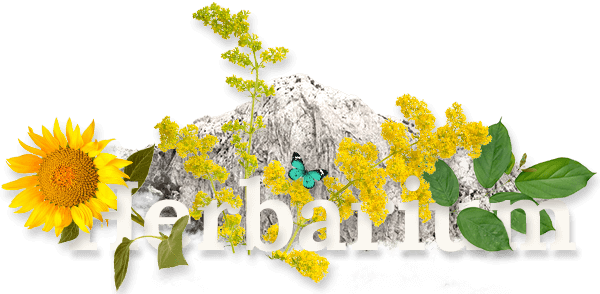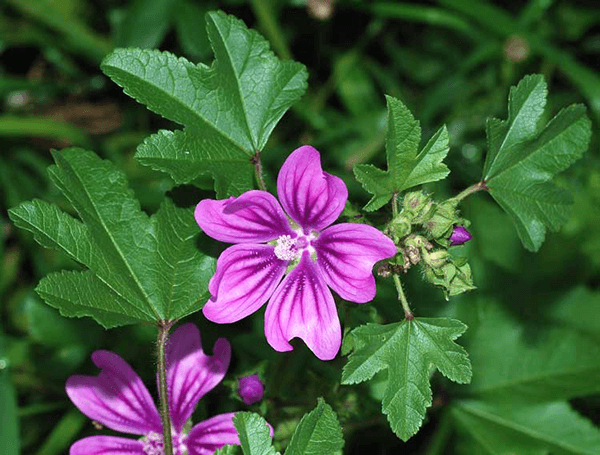Izradu internetske stranice sufinancirala je Europska unija u okviru operativnog programa Konkurentnost i kohezija iz Europskog fonda za regionalni razvoj.
saznajte više

COMMON MALLOW
lat. Malva silvestris
Other names: Black mallow, wild papel, slezenovac wild, wild mallow, mountain sliz, slizovaèa.
Scroll
Habitat:
The species is native to the eastern Mediterranean and North Africa, but is now naturalized in many parts of the world.
Plant Description:
Mallow is a biennial or perennial plant of the Malvaceae plant family. It is covered with small hairs and usually has creeping stems. It can grow up to one meter in height. The leaves are dark green, and the flowers are pink with purple darker veins (the flowers of Mauritanian mallow are deep purple). The flowers are 2 to 5 cm wide and the petals are three to four times longer than the cup. The fruit is ring-shaped and splits into numerous small seed. Flowering time: June to mid-September, and the fruits ripen in August and September.
The medicinal part of the plant:
Flowers and leaves. The large young leaves that are not infected by rust fungus (a common ailment for this plant) can be used in herbal medicine and as food.
Pharmaceutical properties:
Mauritanian mallow also called high mallow (Malva sylvestris spp. Mauritiana L.) is a subspecies of common mallow. It is especially rich in mucilage and the flowers of this subspecies are therefore used extensively in herbal medicine. The leaves and flower buds contain mucus, tannins, flavonoids, essential oil, vitamin C and other substances. The anthocyanin glycoside malvin, a naturally occurring chemical, is only found in the flowers. Malva sylvestris is used traditionally as an herbal remedy for asthma, bronchitis, coughing, throat infections and emphysema. It is also used to treat wounds or inflammation of the mucous membrane in the mouth, throat, stomach, and intestines. Other uses of this herb in traditional herbal medicine include the treatment of gallstones, kidney stones, kidney inflammation, headache, constipation, gastritis, toothaches and insomnia.Use to the astringent, bactericidal and anti-inflammatory properties of the plant it can be useful externally as an herbal treatment for wounds, boils, skin rashes, insect bites, pimples, eczema, acne and swellings.
Cautions:
please be aware that herbs, although natural can interact with certain medications, and that they may be ill advised to use under certain health conditions. Please consult a qualified health practitioner for cautions pertinent to you.
No therapeutic claim is made or intended for AZENA products. Information is for educational purposes only.




